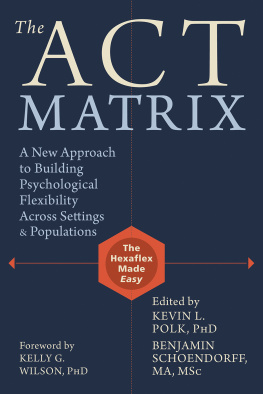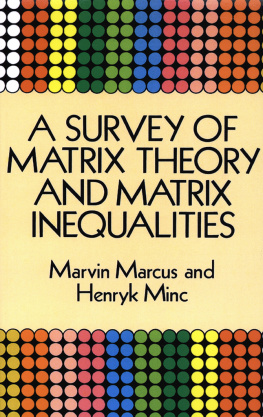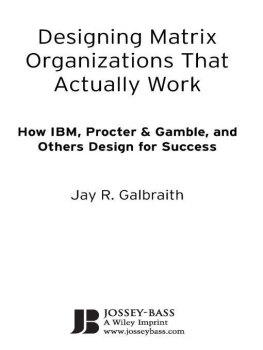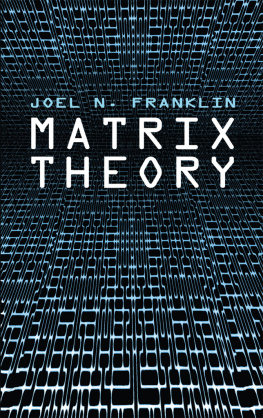
Table of Contents
This edition first published 2014
2014 Dawn Metcalfe
Registered office
John Wiley and Sons Ltd, The Atrium, Southern Gate, Chichester, West Sussex, PO19 8SQ, United Kingdom
For details of our global editorial offices, for customer services and for information about how to apply for permission to reuse the copyright material in this book please see our website at www.wiley.com.
All rights reserved. No part of this publication may be reproduced, stored in a retrieval system, or transmitted, in any form or by any means, electronic, mechanical, photocopying, recording or otherwise, except as permitted by the UK Copyright, Designs and Patents Act 1988, without the prior permission of the publisher.
Wiley publishes in a variety of print and electronic formats and by print-on-demand. Some material included with standard print versions of this book may not be included in e-books or in print-on-demand. If this book refers to media such as a CD or DVD that is not included in the version you purchased, you may download this material at http://booksupport.wiley.com. For more information about Wiley products, visit www.wiley.com.
Designations used by companies to distinguish their products are often claimed as trademarks. All brand names and product names used in this book and on its cover are trade names, service marks, trademark or registered trademarks of their respective owners. The publisher and the book are not associated with any product or vendor mentioned in this book. None of the companies referenced within the book have endorsed the book.
Limit of Liability/Disclaimer of Warranty: While the publisher and author have used their best efforts in preparing this book, they make no representations or warranties with the respect to the accuracy or completeness of the contents of this book and specifically disclaim any implied warranties of merchantability or fitness for a particular purpose. It is sold on the understanding that the publisher is not engaged in rendering professional services and neither the publisher nor the author shall be liable for damages arising herefrom. If professional advice or other expert assistance is required, the services of a competent professional should be sought.
Library of Congress Cataloging-in-Publication Data
Metcalfe, Dawn,
Managing the matrix: the secret to surviving and thriving in your organization / Dawn Metcalfe.
pages cm
ISBN 978-1-118-76537-1 (cloth)
1. Matrix organization. 2. EmployeesMentoring of. 3. Performance. 4. Personnel management. I. Title.
HD58.5.M47 2014
650.1dc23
2013047058
A catalogue record for this book is available from the British Library.
ISBN 9781118765371 (hardback) ISBN 9781118765340 (ebk)
ISBN 9781118765357 (ebk)
Cover design: Simon Goggin
To my new friend Boris. You kept me going when things got hard. Thank you.
Introduction
Working in the matrix is hard. That's what anybody I've ever spoken to who works in one says. Many of them say that it is the only option, however. They recognize opportunities exist in the matrix; but almost every person and a significant amount of research point to turf wars, confusion over accountability, competing geographical and functional targets, lack of clearly defined roles, and too many people involved in the decision-making process, as some of the problems caused or exacerbated by working in a matrix.
To find out how best to deal with these issues I have talked to hundreds of managers, directors and executives during training courses and coaching sessions. I've formally interviewed dozens of individuals entrenched in organizations that use the matrix structure. The answer seems to be that the soft skills we often wait to train people on until after they need them are key to success in the matrix and, possibly, in any job.
This book is a story about Johann, a senior manager, recently converted believer in soft skills and desperate to keep Debra, a high-potential, highly educated member of Gen Y who feels like she's not getting enough attention. It asks whether emotional intelligence (EI) exists and, if it does, how is it useful in working within a matrix? And of course, if it exists and is useful, then can we learn it?
My story is based on what I have learned from clients, many of whom work in a matrix organization. What is striking is the similarity of their experiences across industry, job function, level in the organization, cultural background, age or sex. It appears that it's always difficult to get people from different cultural backgrounds (whether nationality or functional or organizational) to do what you want when you don't understand why they resist, especially if you can't force them and have no control over their pay or conditions.
The personalities and events in this book are not based on any individual but reflect the stories I have heard and the situations I have seen over the years. The issues are challenging because to resolve them you need what the best leaders and companies have, and what the Corporate Leadership Council identified as playing a critical role in the matrix strong communication skills, teamwork, adaptability, and shared goal and rewards systems. Without these (and they are not easy to get) the issues most commonly faced are lack of accountability, frequent conflicts over allocation of resources, and division of authority none of which are good for the bottom line.
Johann and Debra exhibit a mixture of all the great attributes I see in my clients listening, questioning, open-mindedness, generosity, thoughtfulness, determination, and pragmatism. Of course they aren't perfect but then who is? Their faults and opinions are all entirely made up of course.
The matrix isn't going away: in a European survey conducted by Krauthammer, an international professional services company, published in 2006, 85 per cent of people said that some form of matrix was present in their organization. This leaves us with two choices to devote as much time and energy to honing the soft skills that lead to personal and organizational success as we do to building our technical skills or to rail against the tides like King Canute. I hope this book persuades you to do as Johann does.
The Challenge is Set
Johann Spilk was frazzled. He couldn't understand why he'd done it. Why had he just staked his reputation on something that he had only just been convinced himselfwould work? He sighed.
Shrugging off his jacket, he hung it up before greeting a couple of colleagues. Then he checked in with his assistant (as always, here before him and already organized for the day ahead), sat down behind his desk and took a sip of the over-priced and highly calorific coffee he'd started drinking since giving up smoking during Ramadan a few months ago. He turned on the computer screen and logged in, ready to prepare for his day of meetings.
Johann's first meeting was with Debra, a young up and comer currently doing a rotation in the finance department working on a company-wide project. He didn't really know much about her as they had never come into contact.
At a workshop the previous week, Debra had been identified both as talent and at high risk. In other words, she was doing her current job really well and was likely to be able to move up at least two levels in the next three years, but was known to be actively looking for a new job. The exec team wanted to keep her but she had just been turned down for a promotion as they felt she wasn't ready for the next role yet.
Next page











